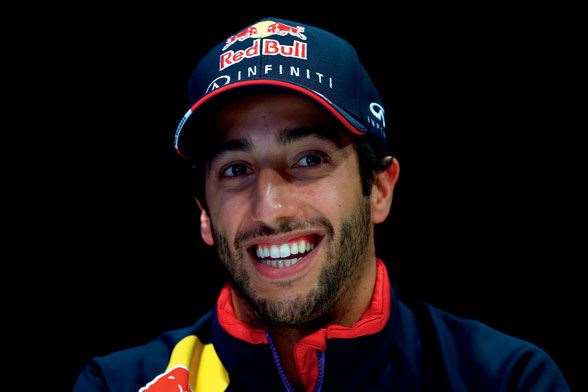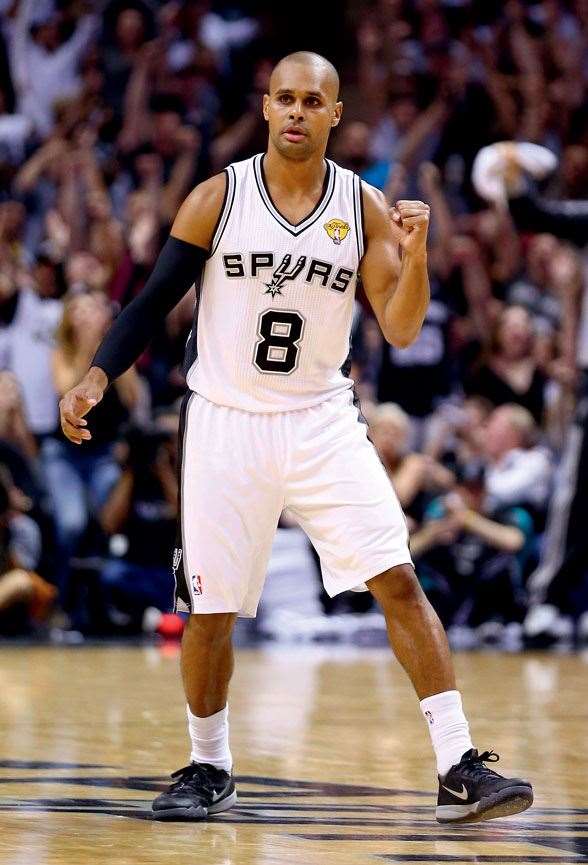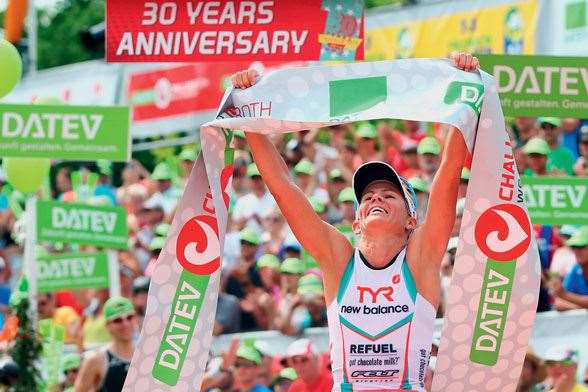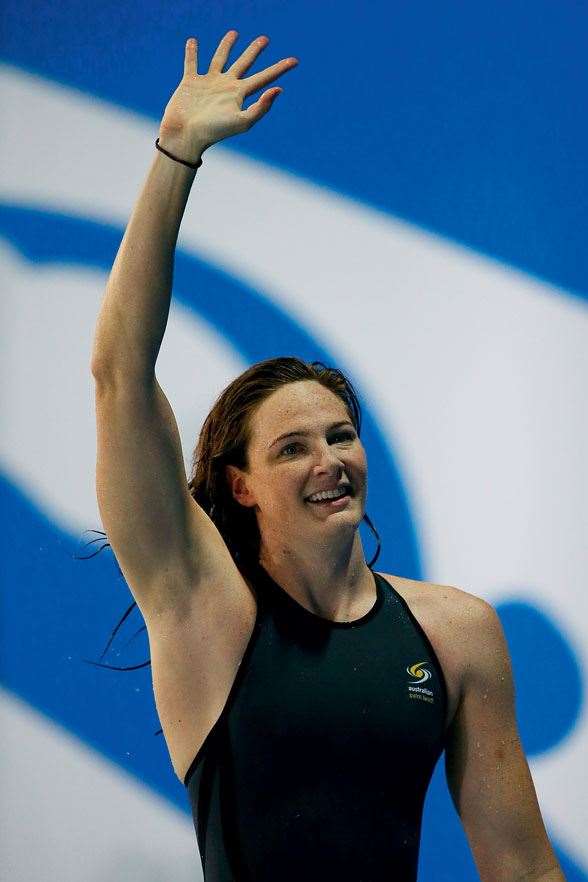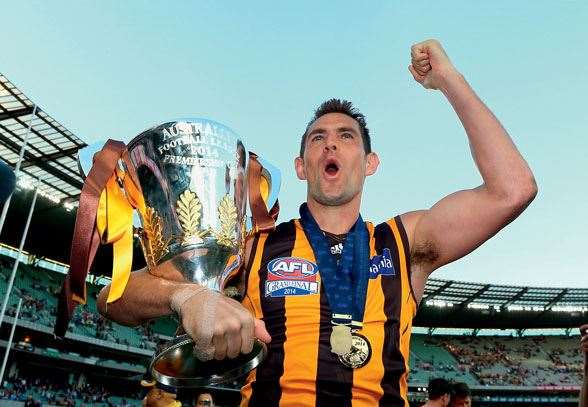Agree with our selections? Or are we off the mark?
To gain a berth in our annual Top Ten, a sportsperson has to tick a few boxes. We first consider their level of dominance in their chosen sport – tops of trees only need apply. Then we check the importance of that sport on the world stage – and truly international games are ahead of fringe, freestyle or even Commonwealth-only games. But then we test the relevance of that sport to Australians, and how big a part of our lives that sport is – so this list is produced with a dash of heart as well as head. Lastly, we factor in the consideration that to excel in a team sport takes something special – and it’s the true superstars who stand out from the crowd. The result? A mixed bag in a pretty fabulous year for the green and gold. We congratulate our Worldbeaters. And, as ever, invite debate. Fire away.
MITCHELL JOHNSON
With his powerful, slinging bowling action, Mitchell Johnson has always been able to deliver serious heat. The question was, would it land on the pitch or not? Back in 2009 he was named the ICC Cricketer of the Year. But injury, waywardness and a loss of confidence saw him overlooked for the 2013 Ashes tour of England. After a decent rest and recovery, he was picked for the return series on home shores last summer – and what a comeback it was: Johnson terrorised the English with his ferocious bowling. He set the scene for the entire series in the First Test, taking 4-61 in the first innings and 5-42 in the second. In Adelaide for the Second Test he took 7-40. He would take 37 wickets in the series, was named man of
the match in three of the five games, and was a shoe-in for Man of the Series as the Australians swept the Poms. He took that form to South Africa, leading the Australian attack to a 2-1 series victory over there. The man had his mojo well and truly back, recalling the era of Lillee and Thommo at their dangerous best. In the sport closest to all Australian hearts, he has excited fans and steered his nation back to the top of the Test world rankings, along the way earning the mantle of “world’s best bowler” and 2014 Allan Border medallist. And Inside Sport’s Worldbeater of the Year.
SALLY PEARSON
Already an Olympic gold medallist, already a world champion, easily Australia’s biggest name in international athletics – how could hurdling superstar Sally Pearson top those feats in an “off” year, with the biggest prize on offer a mere Commonwealth Games medal? Of course she should win the Glasgow gold in a scorching time. But she might also show her mettle – battling injury for much of the first half of the season while still posting world-class times, then enduring a dramatic falling out with the team’s head coach on the eve of her big event, as he publicly bucketed her for being a “bad example” to the rest of the track and field team by apparently not showing up to some event he had organised. It was a tribute to her professionalism and newfound poise that she came on to the track with the nation’s hopes resting on her shoulders, then blitzed the field in a fine time of 12.67 seconds. Sally can!
TIM CAHILL
At 34, most footballers are hanging up their boots. And Cahill certainly saw a few of his Socceroo team-mates read the tea leaves and pull the pin on their international careers this time last year ahead of the Brazil World Cup. Thankfully for Australia, Cahill stuck around, because a curious phenomenon takes place when he is on the paddock playing up front: we score goals. Or, rather, HE scores goals that make the rest of the team look like they know what they're doing. It was his noggin that connected three times in our vital qualifiers to get us to Brazil in the first place. In our opening World Cup Group match against Chile, it was a Cahill header that kept us in the match. Game Two, against the Netherlands, it was a Cahill wonder-volley that levelled the scores – a blistering strike from a long cross that had the whole world talking. Unfortunately, a second yellow in that match meant he had to sit out our third game. But those goals meant he had scored in the last three World Cups, a feat managed by just a handful of players. On the world's greatest sporting stage, Cahill shone.
DANIEL RICCIARDO
There was always the hint of a suggestion that Daniel Ricciardo’s dramatic elevation into a seat in the championship-winning Red Bull Racing Team in 2014 had more than a little to do with his nationality. With Mark Webber’s departure creating the vacancy, and a home GP on our shores costing taxpayers plenty, Australians needed a local hero in this most prestigious of motor racing classes to make it all seem worthwhile. But did Ricciardo really have the talent to cut it? And how! At the Australian GP he qualified in second place, then finished second – only to be DQd later on a technicality. But half a dozen races later he won the Canadian Grand Prix, becoming one of only four Australians to have ever taken the chequered flag in a Grand Prix. At the time of writing he had won two further GPs and was coming third in the drivers’ championship – even besting his team-mate in essentially the same car, four-time champion Sebastian Vettel. In the most elite of driving company, Ricciardo has well and truly shown that he belongs. With the great promise of even greater things to come.
ADAM SCOTT
It was Adam Scott’s time in 2013, when he put Australia’s hoodoo at the Masters to rest. But the year after also went nicely, highlighted in late May by Scott’s rise to number one in the world after he won at Ben Hogan’s old track in Texas. The 34-year-old Queenslander became the 17th golfer to claim the mantle since the rankings were inaugurated in 1986, and emulated the accomplishment of his idol Greg Norman, who has held the top spot longer than anyone other than Tiger Woods. While Scott only had one tournament victory during the US tour season, he maintained a level of play that you would expect from the best golfer in the world – in 17 events he had ten top-ten finishes, and was outside the top 25 only once. Scott was relegated to number two in the rankings after three months by the resurgence of Rory McIlroy, but the prospect of what Scott will have to do to catch the young Irishman is exciting indeed.
PATRICK MILLS
Two seasons ago, Patty Mills was known in NBA circles as one of the league’s most enthusiastic benchwarmers, a figure that his famously gruff coach, Gregg Popovich, had called a “little fat ass”. But Mills became a legitimate baller, an off-the-bench threat who is – as verified by the NBA’s fancy tracking technology – the fastest man in the league. The 26-year-old was an integral part of a champion team that defeated a classic team of champions, the Miami Heat, for the 2013-14 NBA championship. San Antonio had not only won the title, its fifth in the last decade and a half, but along the way played some of the most beautiful basketball seen in decades. And in one sense, Mills was the archetypal Spur, an international (San Antonio has nine players from outside the US) who came in with little fuss, built himself up and played selflessly. During the play-offs, Popovich took time in one of his pre-game talks to highlight the significance of Mabo Day – it acknowledged Mills’ unique contribution to one of the most diverse and admired team cultures in the world of sports.
MIRINDA CARFRAE
It’s official – Mirinda Carfrae is among Australia’s greatest-ever triathletes. Her victory at this year’s Ironman World Championships at Kona, Hawaii was the third time she’d conquered the much-feared torture trail, often described as the world’s most physically demanding single-day sporting event. Her win in just on nine hours (yep, that’s how long it takes even the best to complete the 3.8km swim, 180km bike ride and marathon-distance run leg) completed an amazing 2014 for the gal they call “Rinny”. In April she won the Ironman 70.3 Brazil, her first victory of the year, in four hours, 15 minutes. In July she claimed the inaugural Challenge St Andrews, and two weeks after that she won Challenge Roth in Germany, running herself into the history books by posting the second fastest-ever run split (2:53:27) at her first attempt. This year at Kona, the Colorado-based Queenslander, known for her exceptional running speed and determination over long distances, blew past Switzerland’s Daniela Ryf with less than six kilometres to the finish line.
CATE CAMPBELL
Rio 2016 can’t come fast enough for the fastest woman in the water. Entering the year as the reigning world champion in the 100m freestyle, Cate Campbell was dominant in the blue-ribbon sprint at the major meets, claiming gold in the Commonwealth Games in Glasgow and the Pan Pacs on the Gold Coast. Perhaps as impressively, she anchored the Australian 4x100 freestyle relay team to a world-record-breaking performance in Scotland, a feat made even more remarkable as the team of Campbell, younger sister Bronte, Melanie Schlanger and emerging star Emma McKeon had beaten the time set by the Dutch in the super-suit era four years ago. With Campbell consistently blasting through the sub-53-second mark, observers are now realistically thinking about that super-suit mark, Britta Steffen’s thought-to-be-untouchable 52.07. For her part, Campbell says rather than thinking in terms of times, she focuses on racing to win. With every day that the Olympics creeps closer, the nation will be inclined to agree.
JOHNATHAN THURSTON
In 2014, Johnathan Thurston was deprived of State of Origin glory for the first time in nine years, and his North Queensland Cowboys fell agonisingly short of a grand final berth for the third successive season. But JT was a winner in every other sense. Already famous for his ability to expertly organise whichever team he’s involved with, be it the Cows, Maroons or Kangaroos, Thurston the five-eighth returned to halfback mid-year at the orders of club coach Paul Green, with the 31-year-old playing at a breathtaking consistency previously not witnessed by even his closest admirers. This year he broke the record for most points in State of Origin history. And by the time the grand final rolled around he’d collected his third Dally M Player of the Year medal, sharing this year’s gong with gridiron hopeful Jarryd Hayne. That same night he was also crowned the Provan-Summons medallist as the fans’ choice of Player of the Year. No surprise.
LUKE HODGE
In an AFL culture seemingly overrun by a multi-faceted cult of personality – out-of-control trade targets, sacred-cow coaches, bickering presidents, Brownlow polling machines – Luke Hodge has what all of them really want: the capacity for playing his considerable best, at the moment when a footballer wants to be his very best. While a fair chunk of the season had been defined by the big-money move of Buddy Franklin to Sydney, it was his former team-mates at Hawthorn, led by Hodge, that made the closing statement about how a club puts it all together on the last Saturday in September. The 30-year-old captain of the Hawks claimed his third flag and became the third player to win a second Norm Smith Medal for best on ground in the grand final. Hodge further established himself as one of the finest leaders in Australian sport, at a time when leadership is showing itself to be the critical, yet somehow still underrated, intangible for AFL success.
Related Articles

Feature Story: Moving the Needle

The Aussies at The Open



